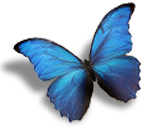Essiac
POTENCY: 12X
The following is a small amount of information on each of the INGREDIENTS of this combination.
CARDUUS BENEDICTUS (blessed thistle) The plant is said to have obtained the name “benedictus” because of its reputation as a heal-all plant. Homeopathic symptoms include cutting pains in the abdomen, bitter burning in the stomach, vomiting, diarrhea, pain and constriction in the trachea, swelling of the veins, twitching and disturbance of vision, and blackness before the eyes for a short time.
FUCUS VESICULOSUS (bladderwrack) Fucus is a potent remedy that strengthens and heals tissues. Indications are obstinate constipation, thyroid enlargement, yellow tinge to the skin—especially of the face, intolerable headache with the forehead feeling as if compressed by a ring, nausea, vertigo, difficulty breathing, nosebleeds, and vomiting of bright red blood. This remedy is renowned for use with goiter.
LAPPA ARCTIUM (burdock) Herbally, burdock is a serious blood and liver cleanser and is often employed in fights against cancer. Homeopathically, Lappa arctium is considered to affect the skin, liver, joints, kidneys, stomach, intestines, and uterus. Indicated for vertigo with nausea and vomiting.
NASTURTIUM AQUATICUM (watercress) Nasturtium homeopathic remedy is used for conditions relating to malnutrition or malabsorption of nutrients. The American Journal of Clinical Nutrition claims that watercress helps to reduce free radical damage to cells. Research published in this journal indicates that watercress (whole food form) turns off the signal that tells the body to create the new blood vessels needed to sustain tumor growth. Amazing, if true! It isn’t known if the homeopathic remedy reduces free radical damage or blocks the blood supplies needed by tumors but the connection between herbal and homeopathic remedies is always very close and fascinating. It is known that Nasturtium aquaticum aids with cirrhosis of the liver and edema (dropsy is the term used for edema in homeopathic texts).
RHEUM PALMATUM (turkey rhubarb) This is a remedy for persistently acidic people. (Cancers grow best in an acidic environment.) Other symptoms include fear of death, colicky pain in abdomen rising up to the chest, cool sweat on the face, loss of appetite with food having a bitter taste, burning when urinating, disordered liver with jaundice, sour-smelling sweat even right after bathing. The sweat leaves a yellow stain on clothing and bedding. This remedy is often indicated in nursing babies when they get sores in their mouth accompanied by sour-smelling diarrhea.
RUMEX ACETOSA (sheep sorrel) Herbally, sheep sorrel is a very strong blood and liver cleanser. Symptoms from homeopathic provings include convulsions with staring and sunken eyes, exhaustion, pain in the esophagus that is worse when swallowing, lack of appetite but intense thirst, violent pains in the intestines, rapid but weak pulse, and sweating so severe it soaks the blankets.
TRIFOLIUM PRATENSE (red clover) Herbal remedies have a reputation for retarding the growth of cancerous tumors and improving the overall health of the patient. Trifolium pratense is listed in homeopathic materia medicas for blood disorders, cancer, and for those with a predisposition to the emotional patterns associated with increased risk for cancer. Trifolium is often a part of remedies suggested for cancer. Other symptoms include confusion and headaches on waking, cold hands and feet, increased flow of saliva, hay fever, and irritation of pharynx and trachea with hoarseness and choking.
ULMUS FULVA (slippery elm bark) Indicated for malnutrition, boils and ulcers, and herpes/syphilitic eruptions. This remedy is known mostly in herbal form, where it is used extensively to soothe irritated internal organs and tissues.
©Copyright Butterfly Expressions 2020, 2021

